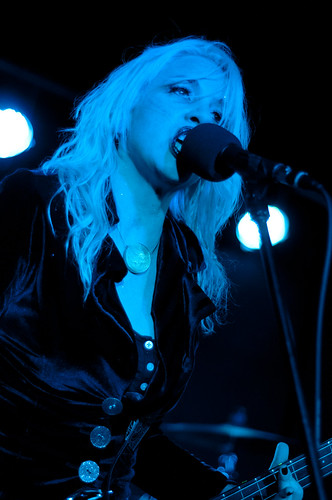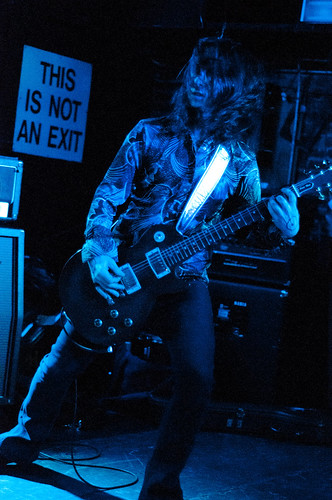The band's live sound, while faithful, is not identical to that of their records. The three-piece format meant replacing the record's synths with a flurry of guitar pedal work that covered the gamut of tone twisting wizardry. While it didn't quite catch the droney goodness that an organ provide, it did manage to create a wall of sound that was more than immersive enough for a live room.
Which isn't to say that the drone wasn't still firmly in place: the bass lines in particular held true to their staunchly repetitive strains from the band's recordings. While the guitar bled on with feedback-laden squelches, the bass line plodded steadily until it came to dominate many of the night's most poignant moments. At times it became so dominant that it almost seemed to become its own entity operating outside, but in sequence with, the band.
That sequence was firmly held in place by drum lines that were the definition of percussive expressionism. Not satisfied to simply provide a backbeat, the drums were instead an always-present force, playing as an equal member of the trio. At times, as the bass and guitar worked together to create an impenetrable wave of sound, and the drums would take on an almost melodic quality as they weaved in and out.
We have to admit: we were expecting White Hills to be a bit more of a Yo La Tengo-style drone fest in the live environ. Instead, they took those tendencies and turned them on their head, choosing to minimize their record's more subtle moments and instead embrace the music's most boisterous inclinations. While the result was perhaps slightly less artistically diverse, it was also a welcome dose of straight-ahead rock and roll which, let's be honest, these days can be pretty hard to find.
More pictures at the HAD Archive.











0 comments:
Post a Comment